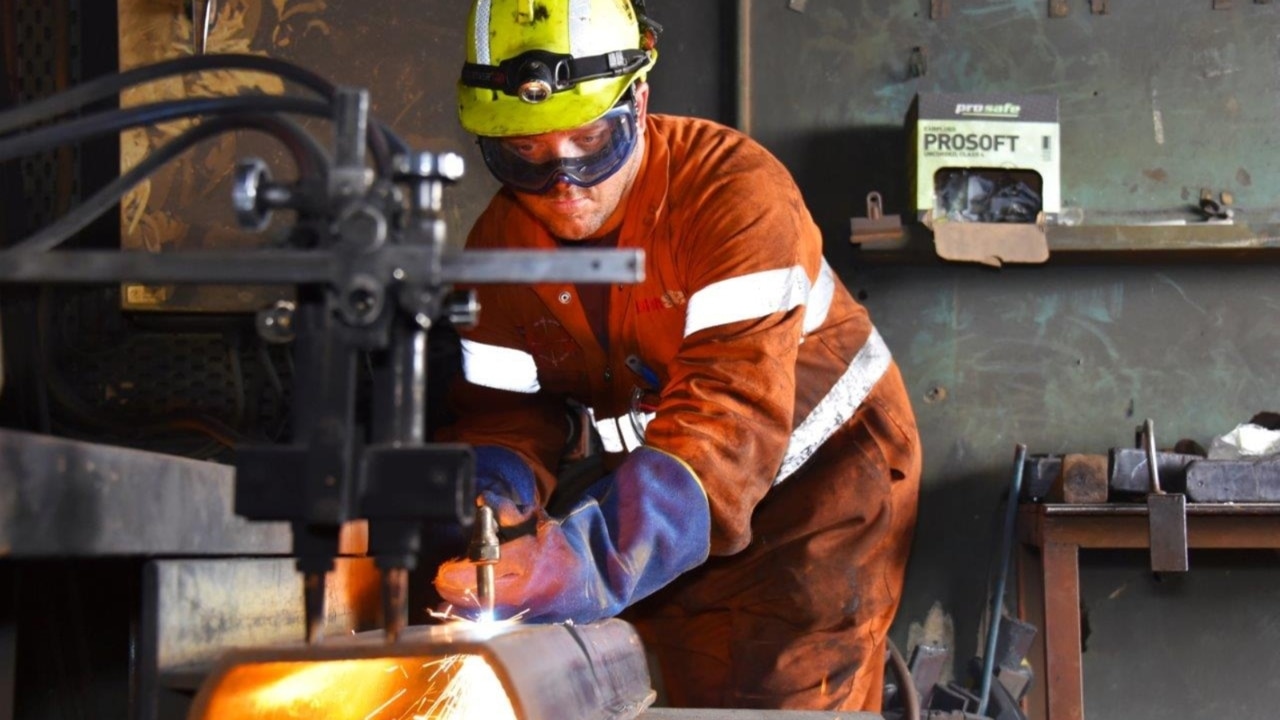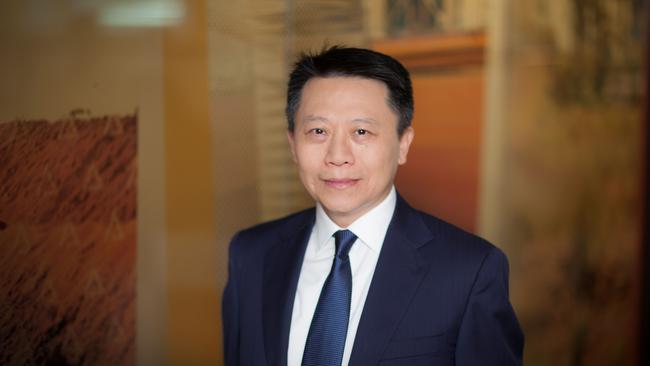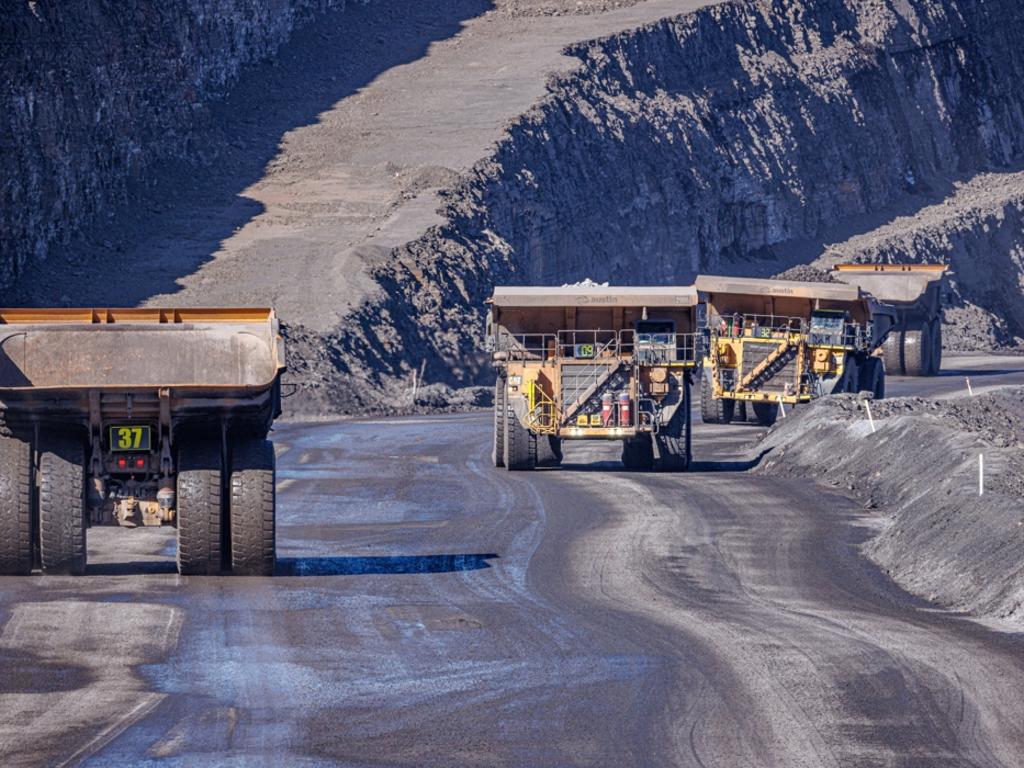CITIC boss says the emerging magnetite industry will be ‘penalised’ under carbon safeguard
The head of China’s biggest single investment in Australia has lashed out at the federal government’s safeguard mechanism.

The head of China’s biggest single investment in Australia has criticised the federal government’s safeguard mechanism, saying planned rule changes could impose a massive carbon penalty on the company’s giant $16bn Sino Iron mine in WA’s Pilbara.
CITIC Pacific Mining chair Chen Zeng told The Australian the emerging magnetite mining industry, only now finding its feet in Australia after a troubled history, would be penalised by the way the new safeguard mechanism treats its mining operations, potentially putting the sector’s future viability at risk.
The Australian understands that, under technical details of the new rules, CITIC’s Sino Iron operations could be required to slash its carbon emission intensity by more than 70 per cent by 2030 – twice the target rate intended by the reforms – potentially imposing an impossible burden on the $16bn operation.
Although the safeguard mechanism was passed in parliament in late March, the federal government is still working through details of how it will be applied to individual industries, including iron ore.
Under the broad outline of the scheme, the bulk of Australia’s 215 biggest carbon emitters will be forced to cut emissions by about 5 per cent a year from July 1. The federal government struck a deal with the Greens to include an “absolute” cap of 1.2 billion tonnes of carbon dioxide by 2030.

And while CITIC said it was comfortable with the broad thrust of the scheme – it has no issues with the requirement to slowly reduce emissions generated by the massive power plant required to run the energy intensive processing plant – Mr Chen said that, unless details of the scheme were amended in an ongoing consultation process, Australia’s emerging magnetite industry could be put at a severe disadvantage.
After a troubled start to its existence in the last mining boom, CITIC’s Sino Iron mine exported more than 21 million tonnes of iron ore concentrate in 2022. The company is still mired in a series of long-running legal disputes with landlord Clive Palmer over the future of the massive project.
Currently the reduction in the carbon intensity from each major mine or industrial site will be measured against a historic baseline at the same site. But over time that will move to an industry average, effectively requiring high-carbon operations to do more than their greener peers.
But, under current plans, that average baseline for iron ore miners will be set from an average across the entire industry – and that will put magnetite at a major disadvantage, Mr Chen said.
“Under the proposed reforms, local magnetite miners are penalised with a much higher emissions reduction burden than their hematite direct shipping ore counterparts,” he said.
“The scheme currently applies the same iron ore production variable to both, despite very different value creation pathways and product characteristics. We’re comparing apples with oranges.”

CITIC, and other magnetite operations, dig up dirt which has an iron ore content of about 25 to 30 per cent. It is crushed to a fine paste and run through a magnetic separation plant to produce a high-purity concentrate grading of about 65 per cent iron.
Traditional Pilbara hematite mines produce ore with 55 to 62 per cent iron, and every tonne dug – excluding waste ore – is put on a ship to customers.
To produce the same amount of export tonnes, magnetite operators must move up to three times the amount of dirt as their direct shipping peers. Most emissions generated by the operations are by diesel-powered trucks, for which there are no current commercial alternatives.
Given the emissions intensity for both types of exports will be calculated by adding up the tonnes mined and dividing by the tonnes exported, Mr Chen said the averaging system – as currently proposed – would put CITIC and other magnetite miners at a significant disadvantage.
The Australian understands CITIC believes it would be required to reduce the carbon emissions intensity of its Pilbara operations by more than twice the 35 per cent targeted under the revised safeguard mechanism – an enormously costly exercise, even if such reductions were achievable by 2030.
And Australia’s magnetite industry has long argued its product actually reduces the amount of carbon produced by the steel industry, given that the product is suitable for pelletisation and actually produces heat when used in blast furnaces – reducing the amount of coal needed to produce a tonne of steel.

“There’s no consideration of the fact that the ore we remove is harder, has a much lower grade and we need to mine greater amounts for beneficiation to produce a saleable concentrate,” Mr Chen said.
“More energy will always be expended at this early mining stage compared to direct shipping ore. This is more than offset by the energy savings our high-grade product delivers at the blast furnace iron-making phase, compared to standard hematite fines feedstock.”
A spokeswoman for federal climate change minister Chris Bowen said the department was still working with magnetite producers to make sure the new rules would not unfairly penalise their operations.
“The safeguard reforms are designed to support competitiveness as the world moves to a global net zero economy,” she said.
“The government has been working with a number of industries covered by the safeguard to ensure that definitions of their production remain appropriate for the revised scheme since the draft position paper was released in January.
“The department is working through the issues raised by magnetite producers to ensure the relevant definitions remain appropriate and support investment.”
CITIC runs one of four magnetite mines in Australia, along with fellow China-backed WA play Karara Mining, Grange Resources in Tasmania, and Sanjeev Gupta’s South Australian mines – which feed the Whyalla steel works, where the British metals magnate is planning a $500m electric arc furnace to take advantage of the high-grade iron ore it produces.
But plenty more are in a multibillion-dollar magnetite development pipeline as miners look to produce higher-grade iron ore products to help customers reduce their own carbon emissions.

Gina Rinehart’s Atlas Iron is running a feasibility study on a new magnetite mine in the Pilbara, and Chris Ellison’s Mineral Resources has also said it is looking at its options.
Fortescue Metals Group is nearing the start of exports from its Iron Bridge magnetite mine, and is also running studies on a new operation – with China’s Sinosteel – in the mid west of WA. Other projects in South Australia and WA are also in the planning stage.
CITIC employs more than 3000 people across its operations, and the intense processing needed to export magnetite is seen as a potential driver of new jobs if the sector continues to grow.
In a submission over the safeguard mechanism the WA Chamber of Minerals and Energy said the current plans could limit the growth of the magnetite sector, if the new rules don’t separate magnetite operators from their direct shipping competitors.
“Continued use of the same production variable for magnetite and hematite will incentivise hematite production over magnetite, limiting the establishment of the new industries and processes critical to the net zero transition,” the submission says.
MinRes has not made any public comment on the issue, but is understood to have contributed to the CMEWA submission and is supporting of its comments.
Fortescue said in late March it supported the safeguard mechanism reforms passed by federal Parliament.
Mr Chen said: “We expect demand for higher grade feedstock to continue, aligned with global decarbonisation efforts. On this basis, magnetite has an important role to play in maintaining WA’s status as a leading iron ore province in the decades to come.
“In keeping with the core principles of the reforms, equitable treatment is essential to protect and grow our local magnetite industry, in turn helping steelmakers reduce their emissions and delivering major community benefits through the value adding of Australian minerals.”






To join the conversation, please log in. Don't have an account? Register
Join the conversation, you are commenting as Logout